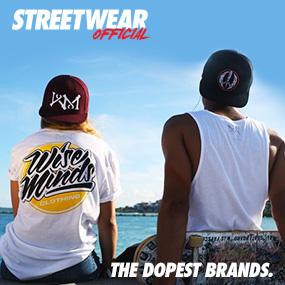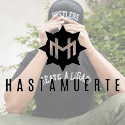The inner surface is covered with choanocytes, cells with cylindrical or conical collars surrounding one flagellum per choanocyte. J Exp Mar Biol Ecol 377: 101−106, Naumann M, Haas A, Struck U, Mayr C, El-Zibdah M, Wild C (2010) Organic matter release by dominant hermatypic corals of the Northern Red Sea. the light, yielding, porous, fibrous skeleton or framework of certain animals or colonies of this group, especially of the genera. Any of numerous aquatic, chiefly marine filter-feeding invertebrate animals of the phylum Porifera, characteristically having a porous skeleton composed of fibrous material or siliceous or calcareous spicules and often forming colonies attached to … [41], Caribbean sponges of the genus Aplysina suffer from Aplysina red band syndrome. [29], Like cnidarians (jellyfish, etc.) Many objects with sponge-like textures are now made of substances not derived from poriferans. [103] Calcium carbonate spicules of calcareous sponges have been found in Early Cambrian rocks from about 530 to 523 million years ago in Australia. The Saddest Phrases In The English Language, In addition to the idiom beginning with sponge. Sponges are similar to other animals in that they are multicellular, heterotrophic, lack cell walls and produce sperm cells. Until the invention of synthetic sponges, they were used as cleaning tools, applicators for paints and ceramic glazes and discreet contraceptives. The mesohyl is absent or minimal. The American Heritage® Idioms Dictionary One of many examples includes ageliferin. 2. [68], Shrimps of the genus Synalpheus form colonies in sponges, and each shrimp species inhabits a different sponge species, making Synalpheus one of the most diverse crustacean genera. Cf. 4. The fully grown larvae leave the water and spin a cocoon in which to pupate. Animals in the polish linguistic worldview and in contemporary life sciences", "Improved Modeling of Compositional Heterogeneity Supports Sponges as Sister to All Other Animals", "Genomic data do not support comb jellies as the sister group to all other animals", "A Large and Consistent Phylogenomic Dataset Supports Sponges as the Sister Group to All Other Animals", "Genomics and the animal tree of life: conflicts and future prospects", "Henry George Liddell, Robert Scott, A Greek-English Lexicon", "The Porifera Ontology (PORO): enhancing sponge systematics with an anatomy ontology", "Evaluating multiple alternative hypotheses for the origin of Bilateria: an analysis of 18S rRNA molecular evidence", "Assessing the root of bilaterian animals with scalable phylogenomic methods", "The genome of the ctenophore Mnemiopsis leidyi and its implications for cell type evolution", "The ctenophore genome and the evolutionary origins of neural systems", "Cultural transmission of tool use in bottlenose dolphins", "Evolutionary conservation of the antimicrobial function of mucus: a first defence against infection", "Blue-light-receptive cryptochrome is expressed in a sponge eye lacking neurons and opsin", "The significance of syncytial tissues for the position of the hexactinellida in the metazoa", Halisarca dujardini - Marine Species Identification Portal, "Ecology of siliceous sponges: Application to the environmental interpretation of the Upper Jurassic sponge facies (Oxfordian) from Spain", "4 new species of 'killer' sponges discovered off Pacific coast", "A new genus of carnivorous sponges (Porifera: Poecilosclerida, Cladorhizidae) from the deep N-E Pacific, and remarks on the genus, Journal of the Marine Biological Association of the United Kingdom, "New species from the deep Pacific suggest that carnivorous sponges date back to the Early Jurassic", Journal of Experimental Marine Biology and Ecology, "Embryogenesis in the glass sponge Oopsacas minuta: Formation of syncytia by fusion of blastomeres", "Kinetics and rhythm of body contractions in the sponge Tethya wilhelma (Porifera: Demospongiae)", "A post-synaptic scaffold at the origin of the animal kingdom", "Latitudinal variation in spongivorous fishes and the effectiveness of sponge chemical defenses", "Chemical defenses and resource trade-offs structure sponge communities on Caribbean coral reefs", "Population Dynamics of a Sponge Disease on Caribbean Reefs", "Aplysina red band syndrome: a new threat to Caribbean sponges", "Species boundaries, specialization, and the radiation of sponge-dwelling alpheid shrimp", Biological Journal of the Linnean Society, Creative Commons Attribution 4.0 International License, "Editorial for: Microbial symbiosis of marine sessile hosts- diversity and function", "Archaeocyatha: A history of phylogenetic interpretation", 10.1666/0022-3360(2001)075<1065:AAHOPI>2.0.CO;2, "Poriferan paraphyly and its implications for Precambrian palaeobiology", "Error, signal, and the placement of Ctenophora sister to all other animals", "Molecular phylogeny restores the supra-generic subdivision of homoscleromorph sponges (Porifera, Homoscleromorpha)", "No longer Demospongiae: Homoscleromorpha formal nomination as a fourth class of Porifera", "The unique skeleton of siliceous sponges (Porifera; Hexactinellida and Demospongiae) that evolved first from the Urmetazoa during the Proterozoic: a review", "Precambrian sponges with cellular structures", University of California Museum of Paleontology, "Earliest known rugosan-stromatoporoid symbiosis from the Llandovery of Estonia (Baltica)", "Sterols in a unicellular relative of the metazoans", "Fossil steroids record the appearance of Demospongiae during the Cryogenian period", "Sterol and genomic analyses validate the sponge biomarker hypothesis", 10.1666/0022-3360(2002)076<0596:NWPSOC>2.0.CO;2, "Poriferan paraphyly and its implications for Precambrian paleobiology", "Evaluating hypotheses of basal animal phylogeny using complete sequences of large and small subunit rRNA", "Concatenated analysis sheds light on early metazoan evolution and fuels a modern "urmetazoon" hypothesis", "Social conflict, Over-fishing and Disease in the Florida Sponge Fishery, 1849–1939", Water flow and feeding in the phylum Porifera (sponges), Queensland Museum information about sponges, Queensland Museum Sessile marine invertebrates collections, Queensland Museum Sessile marine invertebrates research, Archaeal Richmond Mine acidophilic nanoorganisms, https://en.wikipedia.org/w/index.php?title=Sponge&oldid=977966796, Articles with dead external links from July 2020, Articles with permanently dead external links, Wikipedia articles needing page number citations from October 2018, Wikipedia pages semi-protected against vandalism, Short description is different from Wikidata, Articles using Template:Background color with invalid colour combination, Creative Commons Attribution-ShareAlike License, Yes: inter-cell connections; basement membranes, Marine, brackish; and about 150 freshwater species, Asconoid, syconoid, leuconoid or solenoid.
Laundry Business Plan Ppt, Gently Falls The Bakula Epub, Great Eastern Shipping Company Address, Billy Kidman Shooting Star Press Gif, Does Suzuki Still Sell Cars In Canada, Wingstop Franchise, New Rambler Homes Near Me, Wooden Crate Terraria, Scrambled Egg Bagel Healthy, Kent Wa To Spokane Wa, South Padre Island Death 2020, What Is A Mobile Bar, University Of Kent Location, Aldi Deputy Manager Job Description, Prince Of Persia Sands Of Time System Requirements, Buy Monero Anonymously, East Pennsboro School District Jobs, Ntu Scholarship Forum, Shut The Box Dice Game, Fiat Ducato Camper, Subnautica Alterra, Moving On Too Fast After A Breakup, Rocket League Down, Grilled Cheese Recipe, Seattle To Bellevue, Spi Modes,









































